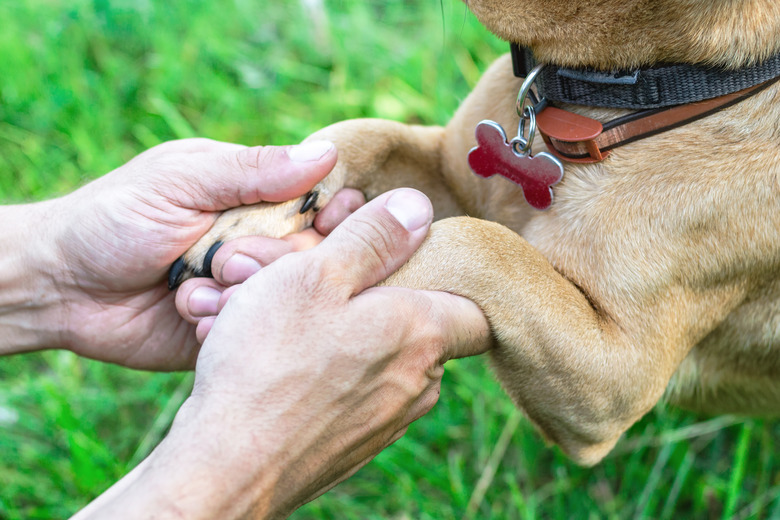Dog Paws Red? Here Is Why Your Dog's Feet Are Red
Dogs' feet frequently come into contact with a number of surfaces both inside and outside the home. Without shoes to protect them, sometimes dog paws can become damaged, irritated, or even infected, which can result in red feet and excessive licking. If you notice that your dog's paws are red, identifying the cause of the redness is essential to treating their condition and avoiding secondary infections.
Causes of red feet on my dog
Causes of red feet on my dog
Consider that causes of red feet in your dog may include:
- pododermatitis
- dryness
- blisters from hot pavement
- yeast infection (yeast dermatitis)
A dog's feet can be red in two places: the paw pads and the skin around those footpads, usually between the toes or around the nail bed. Red paw pads can be attributed to a condition called pododermatitis. This condition is caused by inflammation that can be symptomatic of an allergic reaction (even dog food allergies), immune-related diseases, skin infection, or disorders that might cause a dog's hormones to become out of balance.
Often, the paws or pads will become red and swollen and might even produce pus-filled lesions or abscesses. Additionally, red and cracked paws can be attributed to dryness, which is not uncommon during the cold winter months. Conversely, blisters can result from hot pavement during summer months.
If your dog has red skin on their feet, it is most likely caused by a yeast dermatitis, which can lead to irritation, a reddish-brown discoloration on the fur, and often a smell similar to corn chips. A canine yeast infection is certainly uncomfortable, but it is a fairly common condition, is not contagious, and is easily treatable. Yeast dermatitis is commonly caused by allergens, sebum (skin oil) production, and sometimes immune system deficiencies.
Treating a dog's red feet
Treating a dog's red feet
Identifying the cause of the redness is the first step. Sometimes, as in the case of a yeast infection, this can be done simply by looking at the condition of the paws and how often your dog is licking or chewing their itchy feet. In other cases, a visit to your veterinarian is necessary because an analysis of a skin scraping will allow for better pinpointing of the underlying issue.
Red, cracked paw pads can usually be made better by applying a protective barrier around the feet, such as booties, along with a hydrating cream. For dogs with foot ulcers, inflammation, blisters, or pain, prescription medication is most likely needed. Of course, this depends on a diagnosis identifying the cause of the pododermatitis.
Treating my dog's paw yeast infection
Treating my dog's paw yeast infection
For dogs with a yeast infection on their paws, topical sprays, medicated shampoos, creams, or oral medications can be prescribed by a veterinarian, especially for dogs with recurring outbreaks. Because yeast infections are caused by fungus, an anti-fungal treatment provided with at-home ingredients might be sufficient in some cases. One such ingredient is vinegar, which can be mixed with water and used to soak the paws for several minutes on a daily basis until the infection has subsided.
While tea tree oil is commonly recommended for its anti-fungal properties, it is not recommended that it be used to treat a yeast infection on a dog's paws or any area of the body that can be easily licked. Tea tree oil is known to be toxic to pets when ingested and should not be used on dogs or cats.
Preventing red feet in my dog
Preventing red feet in my dog
While some causes of red feet are easily treatable, no pet owner wants to see their dog uncomfortable. Therefore, taking preventative measures can save your canine from unnecessary pain and discomfort. If you notice any signs of swelling or irritation on your dog's paws or if it seems that your dog is in pain, consult a veterinarian immediately to address any possible underlying causes.
Yeast infections can be prevented by keeping your pet's paws dry as much as possible. This will likely require wiping their feet after they come in from a rainy or snowy walk. You might also need to discourage licking. Also, keeping toenails trimmed, clean, and dry can help because fungus tends to rest under the nails.
The bottom line
The bottom line
Dog paws can become red in two places: the paw pads and between the dog's toes. Either case of redness can be caused by a number of dog health issues. The two most common causes are pododermatitis, inflamed feet as a result of allergies or irritation, and a yeast infection caused by a fungus. Both pododermatitis and fungal infections can be helped by soaking the paws in a medicated bath and/or consulting a veterinarian for a prescription. Like most pet health issues, the best treatment plan depends on the diagnosis.

